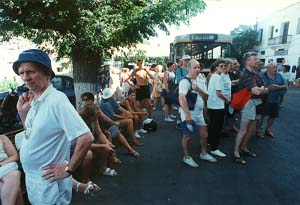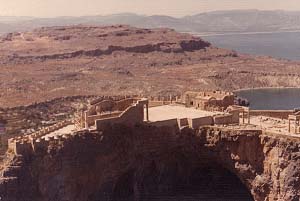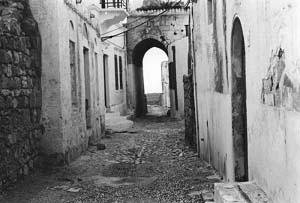The buses begin ganging up by mid-morning, glass-sheathed Pullmans piling one after the other into Lindos' small plaza, disgorging an occupying army of tourists. Many of them have been on a holiday blitzkrieg of the Aegean, one or two ports a day for 10 days. They show signs of battle fatigue. "Harry," one distressed woman calls over her shoulder, "have we been to Crete?" Soon the gabble of day-trippers fills the village. Much English, Scandinavian and German is heard, a little French, Italian and Russian. "Darling," the man says to his wife as they fight through the narrow, cramped streets, passing shop after shop overflowing with trinkets and postcards, snack bars offering Sizzling Hot Crepes and Atomic Hamburgers, "it's our anniversary. Would you like to go to another village and celebrate in an authentic Greek taverna?"
"Can't we find one here?"
"I don't know. All the restaurant signs are in English and I think they serve mostly English food."
"I still think we should stay. Maybe we'll get lucky and find the real thing."
There lies the nub of it: how to find the real thing in a village which has become one of the official beauty spots of the Aegean, on a par with Mykonos and Santorini. Lindos, a village of 500 souls when my wife and I first discovered it in 1961, now receives an average of 10,000 tourists a day. While most of them depart by dusk, their numbers are matched by a second wave of visitors down on package holidays, living either in town or in high-rise hotels outside Lindos.
Some of these night-birds come to shop, taking advantage of cooler temperatures and late closing-hours, but most come to party. Lindos, a village which did not possess running water or electricity in 1961, can now boast of 40 bars and four discos. The action goes from happy hour till dawn, a non-stop carousel of drinking, dancing and making out. There is no Greek music to be heard, only the latest rap, techno and reggae. Retsina has given way to tequila, ouzo to Amstel. Ask for a Greek coffee and you'll be laughed out of the place.


